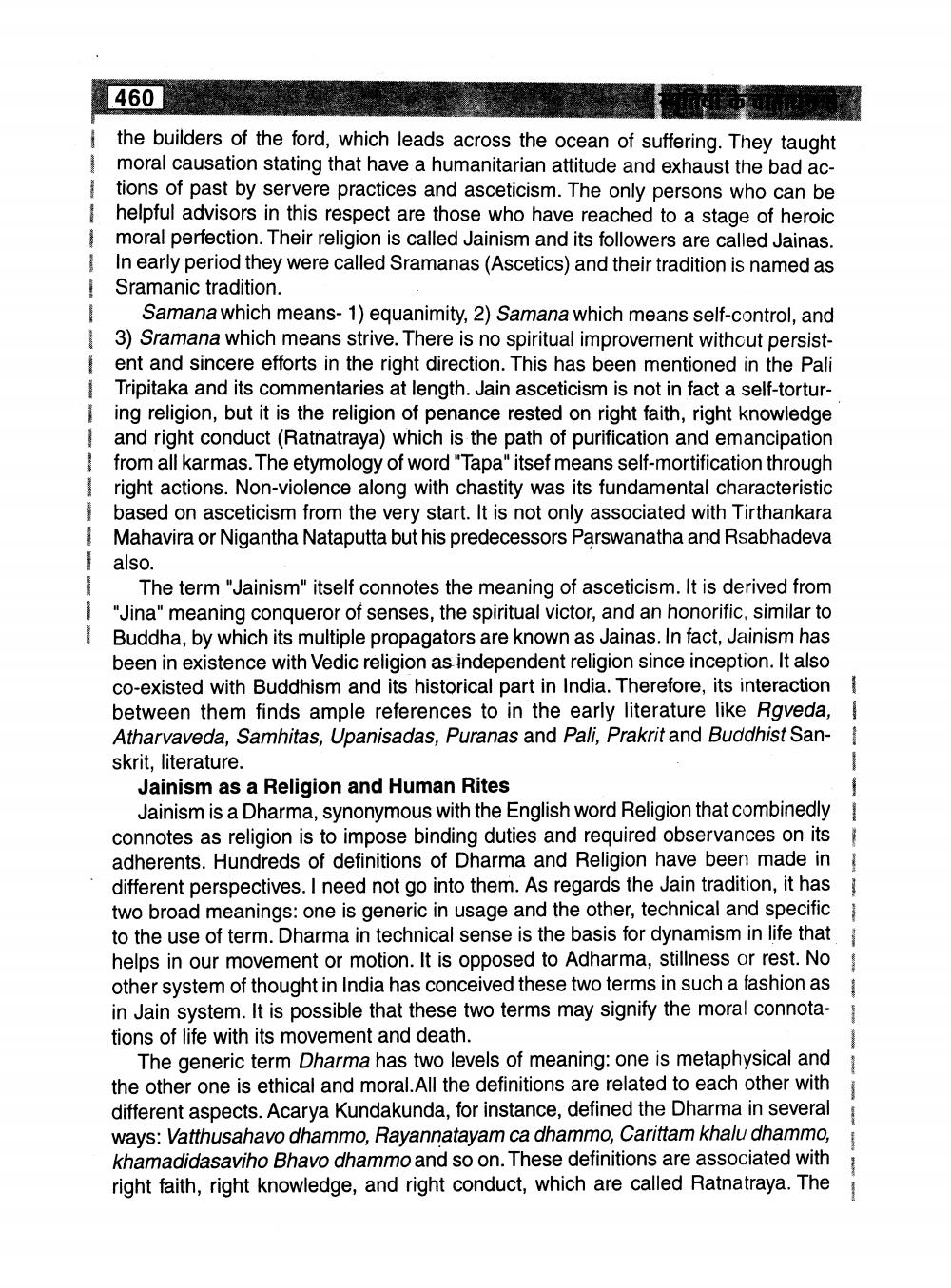________________
460
the builders of the ford, which leads across the ocean of suffering. They taught 1 moral causation stating that have a humanitarian attitude and exhaust the bad ac1 tions of past by servere practices and asceticism. The only persons who can be 1 helpful advisors in this respect are those who have reached to a stage of heroic 1 moral perfection. Their religion is called Jainism and its followers are called Jainas. 1 In early period they were called Sramanas (Ascetics) and their tradition is named as ! Sramanic tradition. 1 Samana which means-1) equanimity, 2) Samana which means self-control, and 13) Sramana which means strive. There is no spiritual improvement without persist
ent and sincere efforts in the right direction. This has been mentioned in the Pali 1 Tripitaka and its commentaries at length. Jain asceticism is not in fact a self-tortur1 ing religion, but it is the religion of penance rested on right faith, right knowledge
and right conduct (Ratnatraya) which is the path of purification and emancipation from all karmas. The etymology of word "Tapa" itsef means self-mortification through right actions. Non-violence along with chastity was its fundamental characteristic based on asceticism from the very start. It is not only associated with Tirthankara Mahavira or Nigantha Nataputta but his predecessors Parswanatha and Rsabhadeva also.
The term "Jainism" itself connotes the meaning of asceticism. It is derived from "Jina" meaning conqueror of senses, the spiritual victor, and an honorific, similar to 1 Buddha, by which its multiple propagators are known as Jainas. In fact, Jainism has
been in existence with Vedic religion as independent religion since inception. It also co-existed with Buddhism and its historical part in India. Therefore, its interaction between them finds ample references to in the early literature like Rgveda, Atharvaveda, Samhitas, Upanisadas, Puranas and Pali, Prakrit and Buddhist San-1 skrit, literature.
Jainism as a Religion and Human Rites
Jainism is a Dharma, synonymous with the English word Religion that combinedly connotes as religion is to impose binding duties and required observances on its adherents. Hundreds of definitions of Dharma and Religion have been made in different perspectives. I need not go into them. As regards the Jain tradition, it has two broad meanings: one is generic in usage and the other, technical and specific to the use of term. Dharma in technical sense is the basis for dynamism in life that helps in our movement or motion. It is opposed to Adharma, stillness or rest. No other system of thought in India has conceived these two terms in such a fashion as in Jain system. It is possible that these two terms may signify the moral connotations of life with its movement and death.
The generic term Dharma has two levels of meaning: one is metaphysical and the other one is ethical and moral. All the definitions are related to each other with different aspects. Acarya Kundakunda, for instance, defined the Dharma in several ways: Vatthusahavo dhammo, Rayannatayam ca dhammo, Carittam khalu dhammo, khamadidasaviho Bhavo dhammo and so on. These definitions are associated with right faith, right knowledge, and right conduct, which are called Ratnatraya. The




